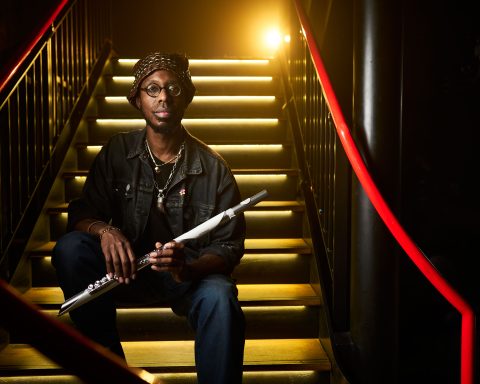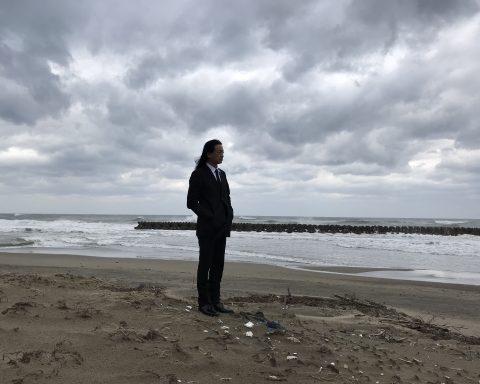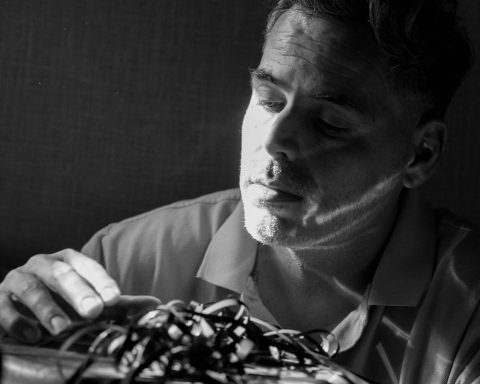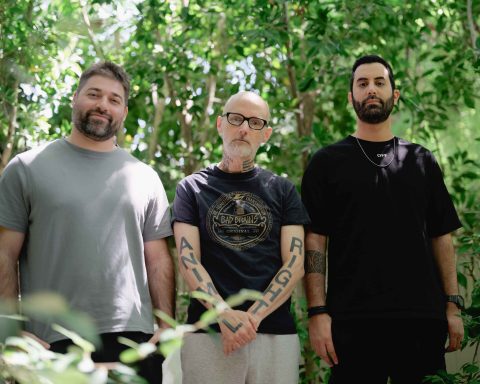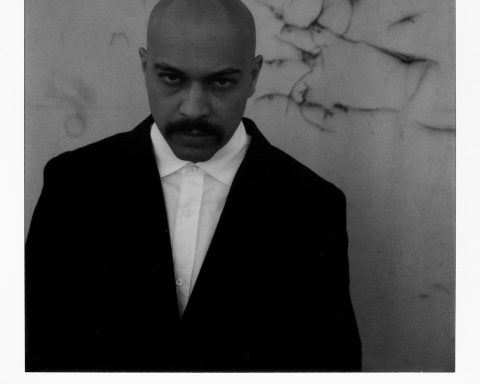“You can hit anything, right?” asks Eli Keszler, speaking from his New York home studio. He is discussing the notion that everything is a drum. “I’ve written music since I was a kid,” he continues, “but once I opened that door, it became possible to imagine other ways of putting together music.”
The multifaceted artist has made a career of doing what Pitchfork describes as “dismantling the idea of what a drum can be and how it should sound.” The circuitous route has served him well. “Then you circle back to your home base, and all of a sudden it’s a wide-open world.”
The Age of Overload
On his new self-titled release, Keszler guides us through rain-slicked city streets where neo-noir guitars twang across dense dystopian soundscapes evoking the modern information overload age. As singular as this work is, it keeps with the unpredictable musician’s evolving canon—one encompassing surprising, jazz-inflected percussion, film scores, and even art installations.
So, does he see himself as a drummer, composer, or simply an artist? “I just try to follow a kind of creative impulse,” Keszler explains. “I developed a voice as a percussionist. At a certain point, I said, ‘I’m gonna stop identifying myself with this instrument,’ and found it quite liberating.”
No Hierarchy
This aesthetic freedom has led him to associations with everyone from the mysterious outsider music icon Jandek to the Iceland Symphony Orchestra. “It’s just a very organic way I approach people, life, and music,” he shares, “and that’s allowed all that to happen naturally.”
Keszler credits his open-mindedness to his upbringing. “My family was liberal in the most positive sense of the word, where there wasn’t a hierarchy. Whether it was pre-war gospel singer Blind Willie Johnson, he was amazing, and so was Bach, and so was Pat Metheny.”
The cast of the new album includes vocalist Sofie Royer and saxophonist Sam Gendel, both musicians with distinctive approaches and distinguished pedigrees. “She’s someone I’ve known socially for quite a while through some friends,” says Keszler of Royer. “I heard a richness and darkness to her voice, and I knew this record was gonna be somewhat brooding and dark. I thought it would be interesting to see what would happen if she sang in this context.”
“It's both an emotional sentiment, but also about technology. The whole record is about both those things and how they interact.”
Partners at Play
Working with Royer, who lives in Austria, required international travel. “Her vocals were recorded in Vienna, where I went over the summer, and we did strings as well,” Keszler says. “We did a week’s worth of sessions, and I was absolutely thrilled with the results.”
In the case of Gendel (an eclectic wind player with a jaw-dropping discography on labels like Impulse!, Real World, and Leaving), the collaboration was a long time coming. “It’s one of those things that was an ongoing joke between us. ‘So when is it gonna happen?’ I really wanted to have Sam involved with this record. I thought his playing would match it perfectly.”
The pair never met in person. “That was a remote session. I sent his track, and was like, ‘Sam, go do your thing.’ He’s got such a particular sound and approach—you kinda stay out of his way.”
Internal and External Worlds
The presence of these two exterior voices adds dimensions to what feels like a batch of highly internal recordings—akin to the churning of a mind before sleep. The single “Ever Shrinking World” offers a thesis of the myopic mood dominating the storyline. In a time when barriers to communication are gone, the song seems to invoke emotional and physical worlds simultaneously.
“It’s both in that I wrote the lyrics to the record collectively,” Keszler reveals. “It’s both an emotional sentiment, but also about technology. The whole record is about both those things and how they interact.”
When it comes to the technology he uses to create such layered, beguiling sounds, the artist is loyal to gear and hardly a hoarder. “I have an SP-404 I’ve had for over 20 years, which I love,” he says. “It’s a beautiful, beautiful piece of gear.”
"It's unlike any other sampler; the way it works is idiosyncratic. There's a chance component I find useful where you accidentally chop something and end up places you wouldn't otherwise."
Sampling the Idiosyncratic
He celebrates the 404’s one-of-a-kind workflow. “It’s unlike any other sampler; the way it works is idiosyncratic. There’s a chance component I find useful where you accidentally chop something and end up in places you wouldn’t otherwise.”
Keszler is similarly open to exploration in the visual art space. As with music, he seems to gravitate toward intriguing opportunities. “That’s another thing that happened in a funny way,” he says. “15 years ago, I did an installation at a space in Boston called the Cyclorama. I had been experimenting with motors and sound with a friend named Steve Pine, a genius guitarist.”
Things ballooned from there. “I had the offer to do a piece and a concert. I wanted to take an ensemble and build this installation with long piano wires that extend all over the space and figure out how to use a micro-controller to strike the wires.”
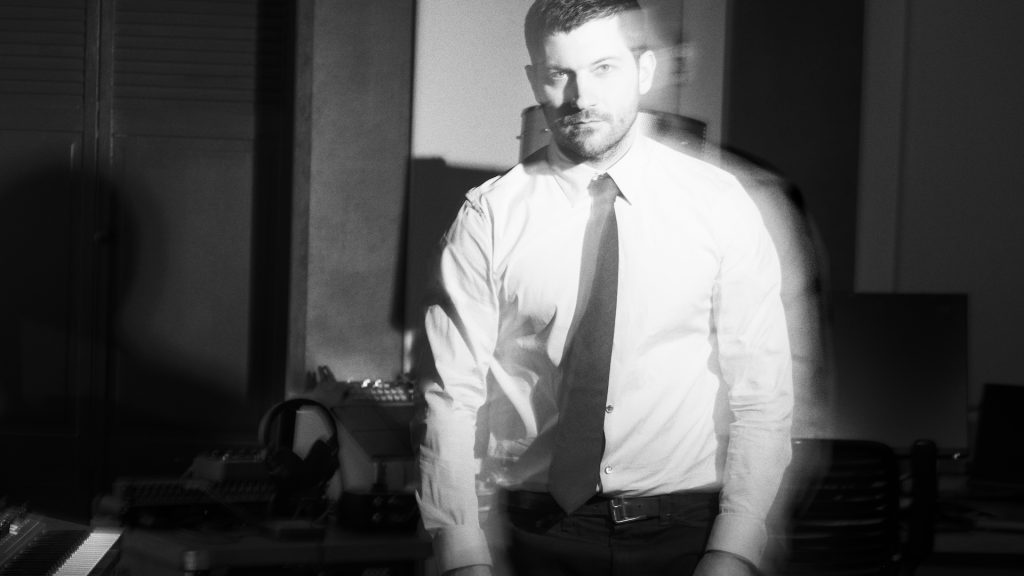
A Sound Environment
As always, for Keszler, context is everything. “I saw it as a way of framing a music performance instead of dictating to the ensemble,” he says. “You take people who like to improvise and say, ‘Here’s a sound environment. Let’s play inside of it.’”
A recording of the experiment took off. “The label I was on was quite popular, at least in the European experimental music world,” he says. “I was very quickly asked to do an exhibition at the South London Gallery.”
The result was another twist in a career full of unexpected side quests. “I almost transitioned into working in the art world for four or five years, doing a lot of these different pieces, and meeting a lot of artists in the process.”
"We see an image in a second and interpret it. You can't do that with music as much as we like to pretend we can.”
Even as a lifelong musician, he acknowledges there is an immediacy to the art world he finds appealing. “The visual language is literally quicker. Waves of light move faster than sound,” he says. “We see an image in a second and interpret it. You can’t do that with music as much as we like to pretend we can.”
Auditory Transportation
If the ability to transport listeners is something Keszler ported in part from his museum and gallery phase, it’s in full bloom in his latest compositions. In no small part, Keszler feels his new work is a reaction to the moment we are living through. “It’s the biggest shift since the 1950s, before our lifetime,” he says. “We’re living through a huge change, and the album is reflecting on an existential feeling around that.”

"Interpersonally, there are all sorts of things happening that are very strange, and I think I tried to capture that malaise on this record."
Like his kaleidoscopic music, the concepts at play on Eli Keszler reflect multiple viewpoints at once. He doesn’t mind if the results make for uneasy listening. “Interpersonally, there are all sorts of things happening that are very strange, and I think I tried to capture that malaise on this record.”
All in all, it’s not the thematic scope of a typical indie record, even an avant-garde one. That’s nothing new for Keszler; in fact, he relishes oddness. “I’m a bit of a magnet for unusual activity.”



